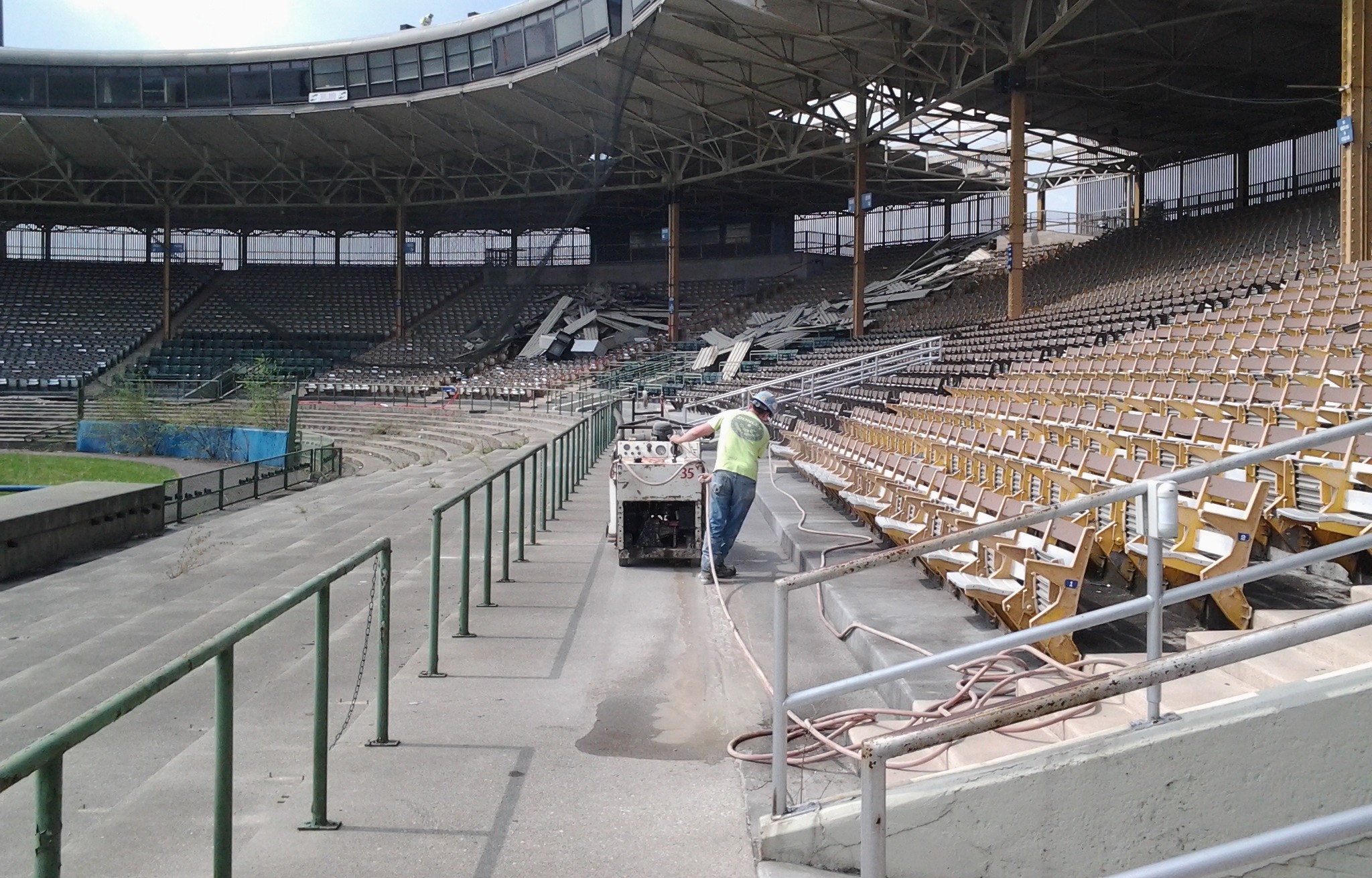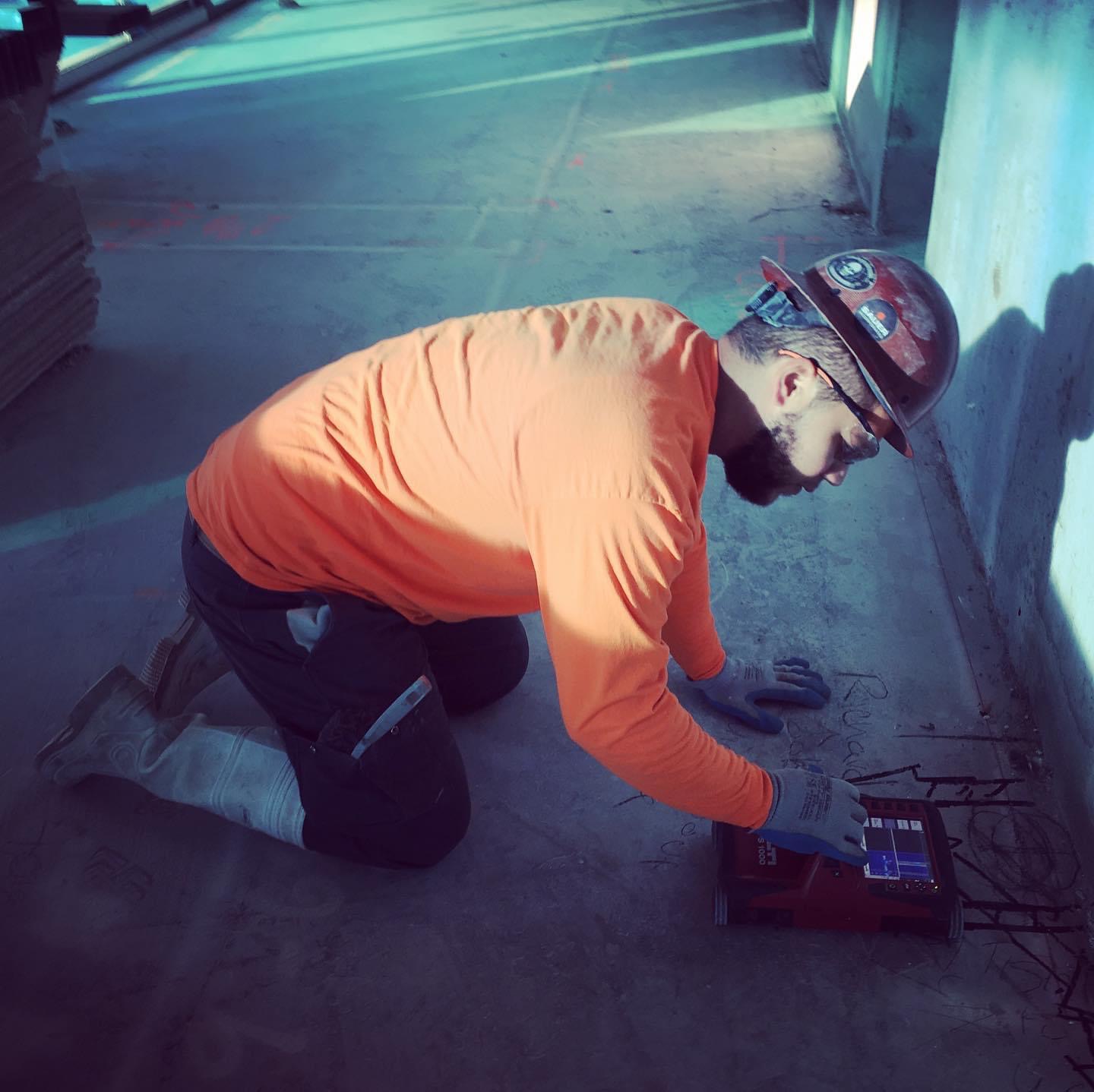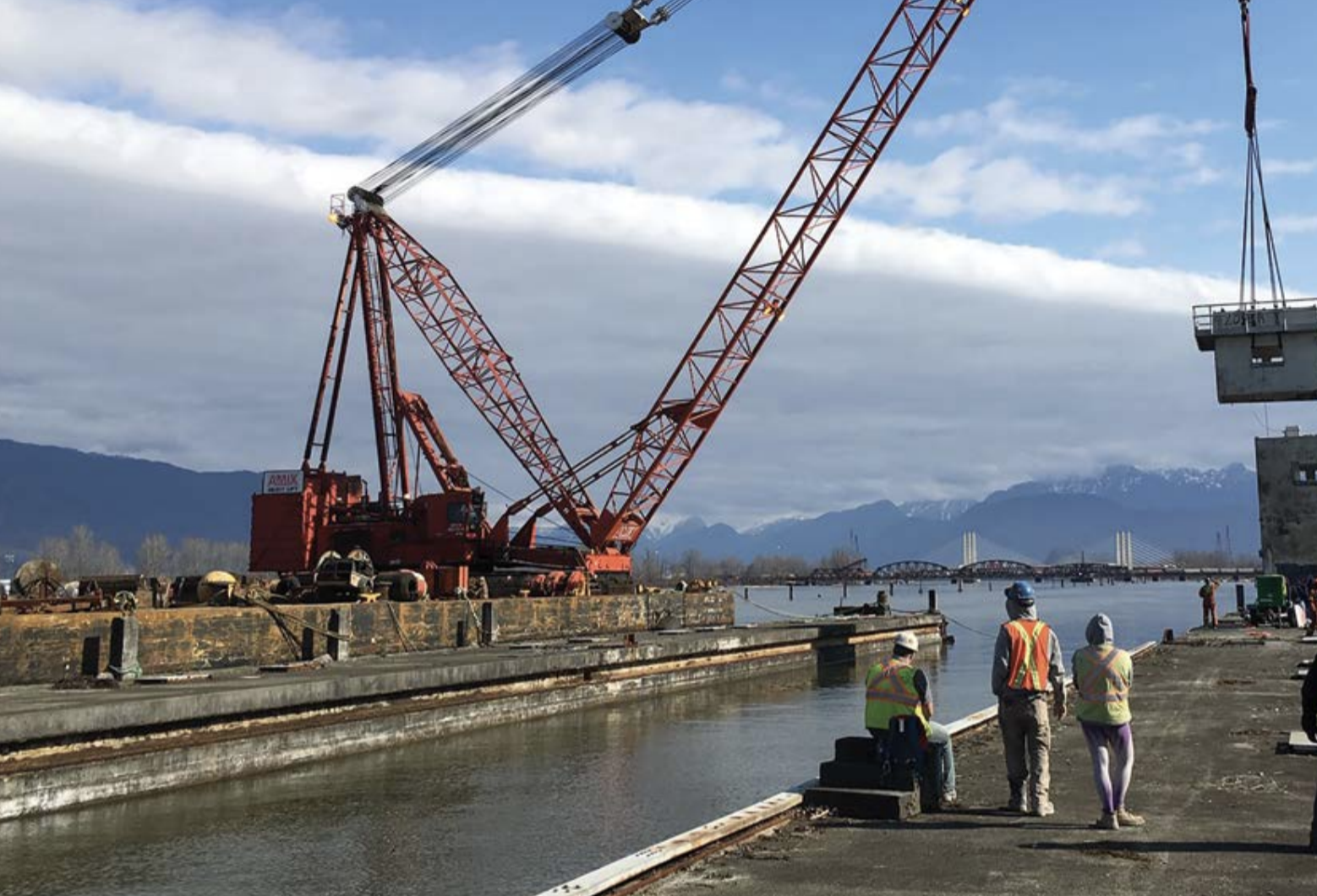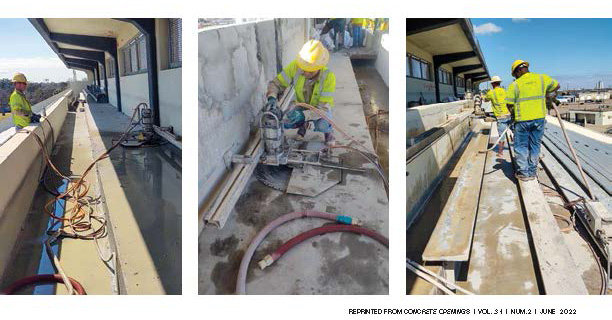
Ship-Wrecked
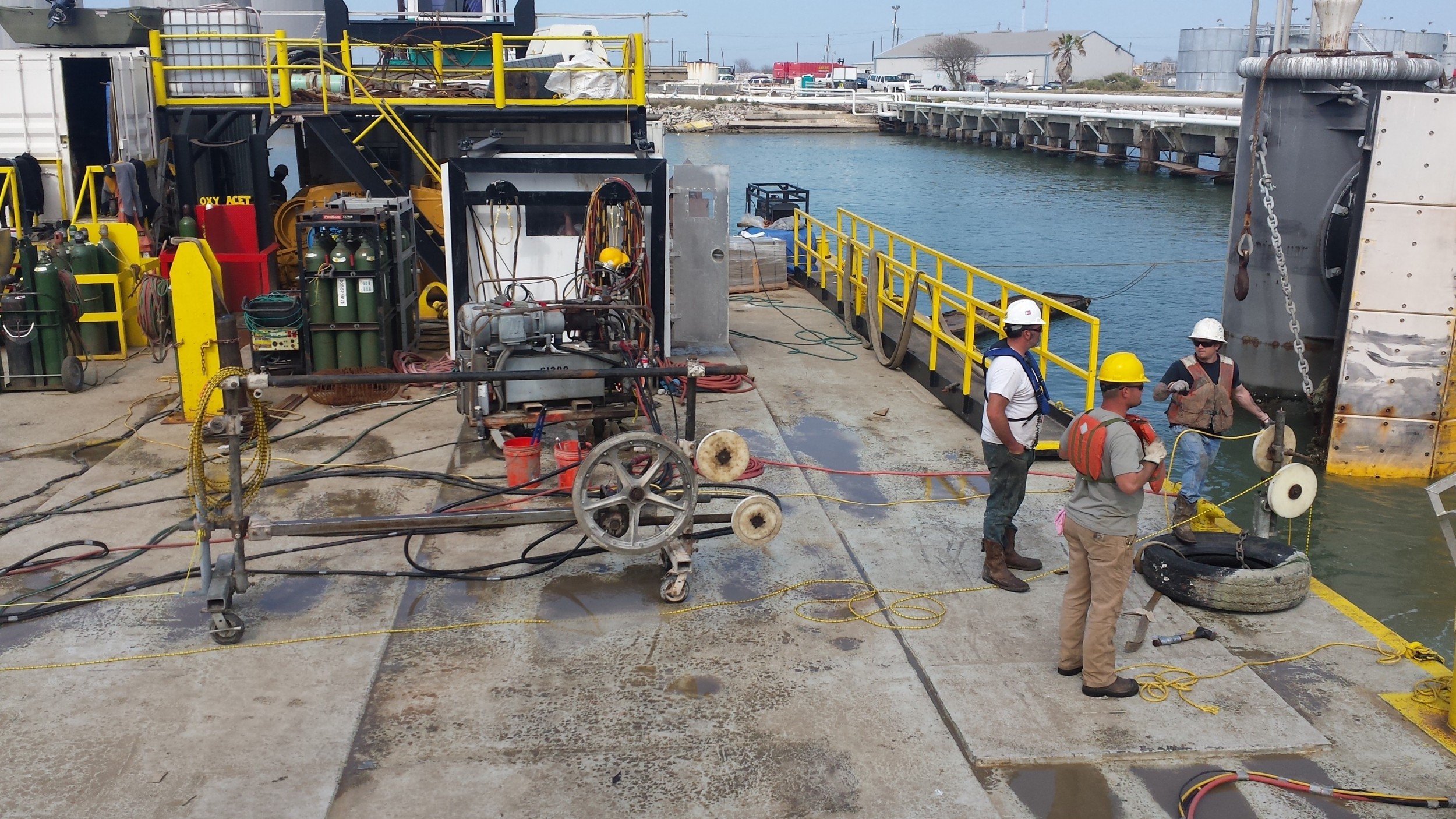
Diamond Tools Help Remove Damaged Dolphin from Shipping Channel
After a 25-foot-diameter, 3.5-foot-thick concrete dolphin was hit by a barge and pushed in to the Galveston Ship Channel, the port operators—Board of Trustees of the Galveston Wharfs—needed to find a way of quickly removing the 140-ton structure to allow other vessels full access in and out of the nearby port and prevent any further ships from hitting it. The structure created a navigation hazard that prevented ships from docking at Galveston Terminals.

Wire sawing equipment was set up to perform pull cuts on the dolphin 30 feet below the surface.
The plan was simple: create an opening in the middle of the concrete dolphin, run rigging through the hole and lift the entire structure out by crane. However, after the dolphin was struck the concrete slab sank to the bottom of the channel—30 feet below the surface. The 140-ton slab settled on a slope on the channel bed in a maze of sheet pile and steel reinforcement.
The Houston, Texas office of general contractor Orion Marine Group hired CSDA member Aggregate Technologies, Inc. (ATI), also of Houston, to set up concrete cutting equipment at Galveston Terminal VW and create an opening in the sunken structure using diamond tools. Other breaking equipment was not considered because it could not be used underwater and may have compromised the remaining structural integrity of the concrete dolphin. Sawing and drilling techniques with diamond wire and core bits provided smooth cutting with low vibration.
“ATI was contracted to supply expert knowledge in concrete cutting underwater and to supply all equipment for drilling and wire sawing,” said Chris Allen, estimator and project manager for the cutting contractor. “We worked with divers who were not familiar with this particular type of coring and drilling equipment, so it was important we instructed them on the correct amount of pressure to apply to the drill while coring and guidance on the removal of the bit and concrete core after drilling. Any problems we, specialty concrete cutters, face on a typical core drilling job would have been far more complicated for the divers in what was a challenging work area.”
Mark Carreon, Orion Marine Group dive manager, said, “We had contracted ATI to provide coring and diamond wire sawing services with our divers in the past. We successfully removed a concrete dock structure from the Port of Corpus Christi in 2006. The dock had fallen over into 40 feet of water and remained there for over 20 years. Orion Marine Group and ATI cut the dock structure into seven sections each weighing between 250 and 350 tons. The sections were safely removed from the port’s waterway and disposed of offsite. From our past experience, we had confidence in ATI and knew who to contact for this job.”
Orion Marine Group specified that a 2-foot by 2-foot square opening be made through the middle of the 3.5-foot-thick dolphin so that rigging could be run through it. To create this opening, four 4-inch-diameter holes were core drilled in four corners of the marked square and then a wire saw was used to make four pull cuts from one corner to the next. In addition, ATI was tasked with setting an anchor in the cut concrete section so that it could be lifted out by crane.
ATI mobilized and transported all necessary core drilling and wire sawing equipment to the jobsite, which included a Meco hydraulic core drill, a wire saw from CSDA member Diamond Products, a generator and a portable hydraulic power pack. The contractor worked from a floating work barge where operators began to instruct the divers on how to set up the core drill, from drilling anchors and depth, setting anchors and setting up the drill stand to mounting the drill on to the stand and connecting hydraulic hoses. Everyone was instructed to wear life vests at all times and applicable items of personal protective equipment. All tools and equipment, including spares, were transported on and off the work barge each day to minimize down time. The barge was positioned 40 feet from the dock during the work, therefore time would have been lost if the barge had to be re-docked and moved back in to position.

The 2-foot square, 3.5-foot-thick cut concrete section was anchored and removed by crane.
Once Orion’s divers were in the water, ATI operators were able to communicate with them using CB radios to provide any further instruction. It took the divers three 12-hours shifts to complete the four 4-inch-diameter, 3.5-foot-deep holes in what was a difficult environment. Due to safety restrictions on the amount of time the divers could spend underwater, work was limited to around three or four hours. When in the water, simple tasks were hard to execute because visibility was between 1 to 2 feet. This limited visibility caused problems when securing the drill stand to the dolphin. Extra time had to be taken to correctly set the anchors before drilling could start.
With all holes drilled, the general contractor entered the water to hand jet a tunnel under the dolphin. The 25-foot-diameter structure lay flat on the bed of the ship channel, so a path had to be created so that the divers could run diamond wire under it and through the core holes to perform pull cuts. The wire was returned 30 feet up to the surface and set on the saw. At this point, ATI operators were able to run the equipment from the barge and monitor gauges to adjust wire speed and tension. This helped maximize the cutting speed and efficiency of the diamond wire. Each 2-foot pull cut took approximately 45 minutes to complete, including setup and adjustments above and below the surface.

Rigging was run through the concrete opening and the damaged dolphin was removed from the ship channel.
Once all wire sawing work was finished, divers drilled four holes in the cut section and an anchor plate was attached to its top 2-foot square surface. It was then attached to the crane and lifted out of the water for removal from site. Following this, rigging was run through the wire sawed opening and the 140-ton damaged concrete dolphin was lifted out of the water in one piece as planned.
The cutting and removal of the damaged concrete dolphin was completed on schedule, despite some stoppages to allow barges and other vessels to pass by the work area without hitting the sunken structure. All work was completed in 13 days with divers and operators working 12 hours a day. To limit occurrences of the drill stand becoming loose on the dolphin, ATI operators instructed the divers to make additional strikes to the anchors than would normally be required and set secondary anchors as backups.
“The job turned out as well as we hoped it would. Working underwater with divers that were not familiar with the equipment or work with it on a daily basis was my biggest concern. However, our experienced operators did a great job of communicating specific information to the divers while in the water. In turn, the divers performed very well given their inexperience with topside core drills and having to do the work in such a challenging environment,” concluded Allen.
Company Profile
Aggregate Technologies, Inc. has been a CSDA member since 2013 and is based in Houston, Texas. The company has been in business for 18 years, has 30 employees and 20 trucks. Aggregate Technologies, Inc. services the entire U.S. and offers the services of core drilling, wall sawing, wire sawing, flat sawing, selective demolition, pile cutting, breaking and hauling and ground penetrating radar. The company employs CSDA Certified Operators.
Resources
General Contractor:
Orion Marine Group
Sawing and Drilling Contractor:
Aggregate Technologies, Inc.
Houston, Texas
Phone: 281-579-7229
Email: chrisa@aggregatetechnologies.com
Website: www.aggregatetechnologies.com
Methods Used: Core Drilling, Wire Sawing











